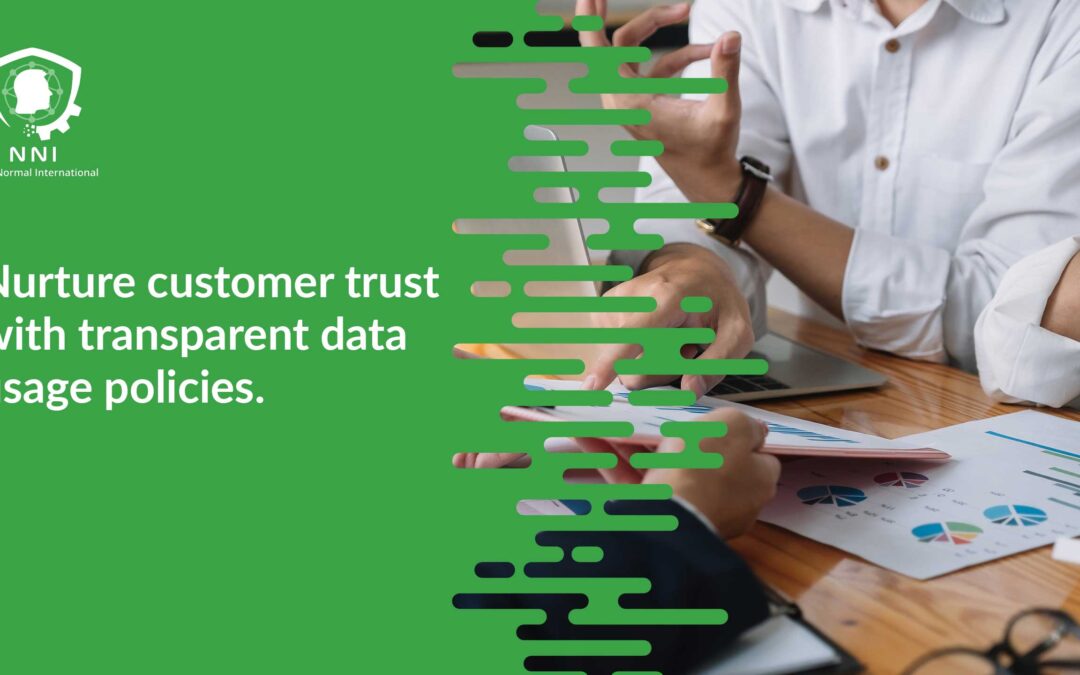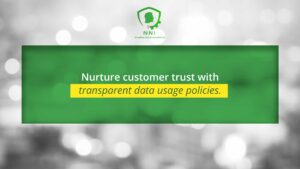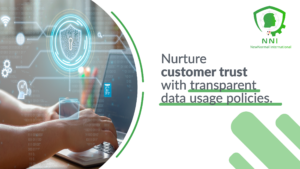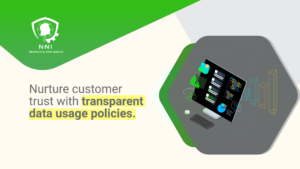Building Confidence in a Data-Driven Business World
In an age where data privacy concerns are at the forefront of customer’s minds, Nurture Customer Trust with Transparent Data Usage Policies has become a cornerstone for business success. This article will explore how businesses can establish and maintain trust by being transparent in their data usage practices.
Change Management: Pivoting to Transparency
The journey towards building trust through transparency in customer data practices requires more than simply updating privacy policies. While policy revisions are a crucial step, they are merely the starting point. A truly transformative journey necessitates a comprehensive change management strategy that shifts the organization’s entire approach to handling data, fostering a culture of openness and transparency across all levels.
This strategic approach involves several key elements:
1. Embracing Data Ownership: A fundamental shift in mindset is essential. Organizations must move away from viewing customer data as an asset they own and control, towards recognizing it as belonging to the individual. This shift empowers customers and fosters trust by placing them in the driver’s seat of their data.
2. Transparency by Design: Openness and transparency must be woven into the very fabric of the organization’s data practices. This includes readily providing clear and concise information about data collection, usage, and sharing practices, ensuring that customers are fully informed and empowered to make informed choices about their data.
3. Accessible Privacy Policies: Privacy policies should not be complex legal documents hidden away in inaccessible corners. Instead, they should be written in plain language, readily available, and easily understandable by all stakeholders. This ensures that everyone, regardless of their technical expertise, can access and comprehend the organization’s data practices.
4. Proactive Communication and Engagement: Organizations must actively engage with customers and stakeholders, explaining data practices in detail and addressing any questions or concerns. This ongoing dialogue fosters trust and demonstrates a genuine commitment to transparency.
5. Empowering Customers with Control: Organizations should provide customers with meaningful control over their data. This includes offering options to access, correct, or delete their data, as well as the ability to restrict its use for specific purposes. This empowers individuals and reinforces their ownership of their data.
6. Building a Culture of Data Ethics: Cultivating a strong ethical foundation is essential for sustainable trust. This involves establishing clear guidelines for data use, promoting responsible data governance practices, and holding all employees accountable for ethical data handling.
7. Continuous Improvement and Learning: Achieving and maintaining transparency is an ongoing journey, not a destination. Organizations must continuously monitor their data practices, identify areas for improvement, and adapt their strategies based on evolving regulations and customer expectations.
8. Building Strong Relationships with Regulatory Bodies: Engaging in open communication and collaboration with regulatory bodies is crucial for ensuring compliance and demonstrating commitment to responsible data practices.
9. Measuring the Impact of Transparency: Transparency initiatives should be strategically measured to assess their impact on customer trust, brand reputation, and overall business performance. This data-driven approach allows organizations to refine their strategies and optimize their efforts for maximum impact.
10. Investing in Transparency Technologies: Leveraging technology can significantly enhance transparency efforts. This includes implementing privacy-enhancing technologies, data visualization tools, and consent management platforms to empower customers and provide them with greater control over their data.
By embracing these key elements and embarking on a comprehensive change management journey, organizations can transform their data practices, foster trust with customers, and build a foundation for sustainable success in the age of transparency. This strategic approach paves the way for a future where data empowers individuals, drives innovation, and strengthens relationships between organizations and the communities they serve.
Executive Coaching for Data Policy Leadership
Executive coaching services can play a crucial role in training leaders to understand the importance of data transparency. Coaching helps leaders to navigate the complexities of data protection laws, ethical data usage, and effective communication with customers about data policies.
Effective Communication of Data Policies
Clear and effective communication is vital in conveying data usage policies to customers. Businesses should aim to communicate their data handling practices in a straightforward and understandable manner, avoiding technical jargon that can confuse or alienate customers.
The Role of Generative AI in Data Management
Generative Artificial Intelligence (AI) can be utilized to analyze customer data while respecting privacy guidelines. AI can help in personalizing customer experiences without overstepping privacy boundaries, thereby maintaining trust.
Leadership in Data Privacy and Trust
Leadership plays a crucial role in setting the tone for how data is handled within an organization. Training in data ethics, privacy laws, and customer-centric practices is essential for leaders responsible for data policy decisions.
Keeping Up with Business News and Data Privacy Trends
Staying informed with the latest trends and news in data protection and privacy laws is crucial. Regular updates can help businesses stay compliant with regulations and demonstrate their commitment to protecting customer data.
Project Management for Implementing Data Policies
Effective project management is essential for implementing new data usage policies. This includes developing timelines, setting clear goals for transparency, and ensuring that all team members understand their role in maintaining customer trust through data policy.
conclusion Nurture Customer Trust with Transparent Data Usage Policies
In conclusion, nurturing customer trust with transparent data usage policies is a multifaceted approach that requires a change in organizational mindset, leadership commitment, effective communication, and the use of advanced technologies like AI. By focusing on these areas, businesses can build a foundation of trust that not only complies with legal standards but also resonates with customers’ expectations for privacy and transparency.























